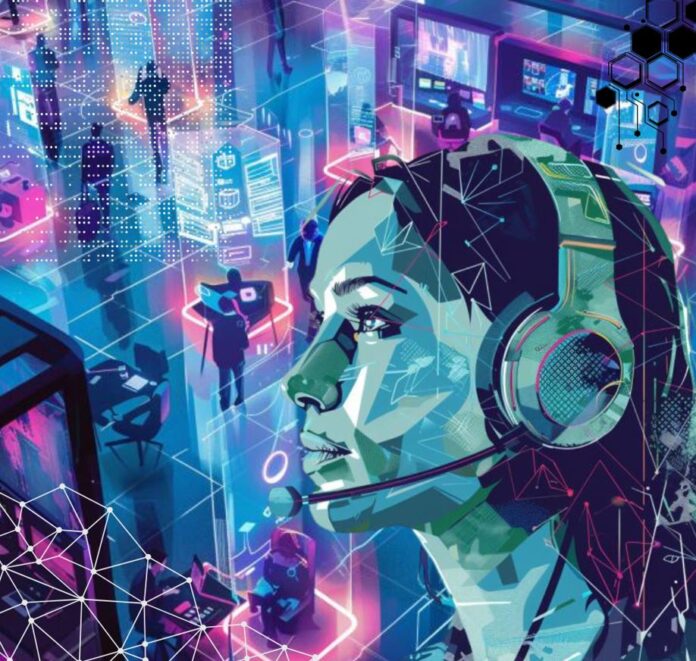[ad_1]
Developing a successful contact centre, that customers actually like to use, is something of a black art. It’s important because contact centres are organisations’ front lines, and not getting them right often has a negative effect on customer satisfaction.
Having developed a solid understanding of what it means to operate a contact centre, what customers expect and the nature of human interactions, solutions provider Kytec has been able to evolve Cisco Webex Contact Centre into a different beast altogether: a customer experience centre.
First, let’s talk about voice, which remains the preferred communications channel for many customers, and totally necessary for some applications like health and support hotlines. It doesn’t come easy or cheap though.
“Voice is very expensive and a difficult channel to work with,” Kytec’s managing director David Okulicz explained.
“It has to be real time – we have no choice about that,” Okulicz said. Furthermore, it’s hard to create self-service and automation opportunities with voice, he added.
A not so obvious difficulty with voice is the location customers call from, Okulicz pointed out. If for example they’re driving, or on public transport, customers can be in a noisy environment. This makes voice detection and recognition hard and very challenging to accomplish, he said.
In that scenario, customers can get frustrated, irritated and drop the call. That’s one reason contact centres get their bad reputation.
“Remember, a customer is not calling you because they want to speak to a representative,” Okulicz said. “That’s probably the last thing they want to do.”
“They’ve got a problem, and they want to solve that problem. That’s all they really care about,” Okulicz said.
Add digital to the contact centre mix
This is where digital has some real advantages, Okulicz said. It’s near real-time, but it doesn’t have to be exactly that. Automation and self-service is easy with digital as well.
One particular advantage of digital channels becomes apparent when dealing with customers with accents, or who don’t speak English as their first language.
“Usually, their written English is much better than their spoken English, making it far easier to understand,” Okulicz said.
“We don’t need complex engines to understand what’s being said, because it’s being written down and computers can parse and read words,” he added.
Needless to say, if a customer doesn’t have difficulties in being understood, that person will report a much better, happier experience.
How AI can improve the customer experience
There are two sides to the contact centre equation, with the representative dealing with enquiries or problems needing support as well to deliver the best customer experience.
“No agent wants to provide a bad customer experience,” Okulicz said. Sometimes that bad experience comes from the representative having to scroll through different screens in multiple applications, copying and pasting information between them – and going silent while “swivel chairing” which is never popular with customers.
Kytec is a Salesforce partner that provides cloud voice products that use an artificial intelligence engine to provide a seamless experience for representatives.
“You basically would struggle to work out where the traditional contact centre stops, and where the Salesforce customer relationship management application starts,” Okulicz said.
With a single-window view for agents, that tells them all they need to know about customers, like which products they have and previous interactions, without awkward silences and waits, the AI powered system creates that seamless experience.
With the AI engine listening in and providing little hints as to what to do along the way, agents can get through requests much faster and smoother.
The AI can present information that representatives can speak to customers about, or even suggest that agents start automated workflows.
“If someone’s calling and asking for a particular document to be sent to them, or how to do particular process, the agent can fire off a workflow that sends out a branded email with, for example, a step-by-step guide, rather than sitting on the phone, and talking customers through how to do things,” Okulicz said.
Being able to serve customers better, with the right digital tools, makes for happier staff.
“When the call comes, take it and talk to the customer. All the information you’ll want to service their needs is sitting in front of you; both sides of the conversation are going to be pretty happy with that,” Okulicz said.
The business benefits of moving to digital
For organisations struggling to fill contact centre positions, this presents a double improvement. Not only are happy staff less likely to move on, a better customer experience by using digital tools in the contact centre reduces the number of employees needed to handle call volumes.
Going digital in the contact centre and using AI engines increases first-call resolution (FCR) numbers for organisations. It can also add efficiencies in less obvious ways, like when call transfers are needed.
“”Every time I transfer a caller, I have two agents talking during the handover. At that stage, I am double paying for someone,” Okulicz said.
“Customers are on hold, getting a little upset about how long stuff is taking, wondering why the first person didn’t have the necessary information, knowledge or skill needed to sort everything out,” he added.
“With everything bundled up, FCR should go through the roof,” Okulicz said.
Okulicz said that digital can provide some significant cost savings.
“If we can move half of the load onto digital, maybe even just 20 per cent of it, and then automate 50 per cent of that, we’re looking at a 10 per cent reduction in call volumes,” he said.
That represents a pretty considerable cost saving straight off the bat, which rounds off the set of benefits for all parties, customers, agents and contact centres included, when tapping into digital channels for the best experience for everyone.
[ad_2]
Source link


